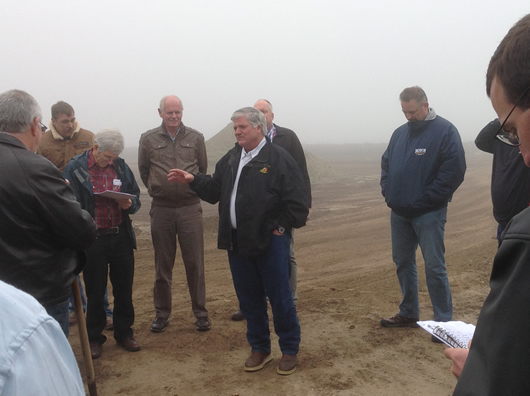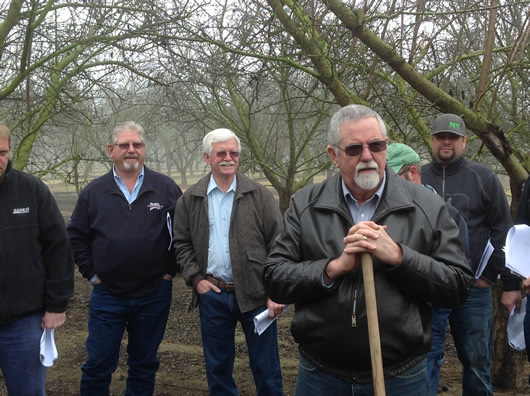February 2015
In this issue:
- A closer look at sandy soils
- World Wide Agriculture conference - update
- Fertiliser in a dry year
- Around the traps
A closer look at sandy soils
Bruce is just back from a Kinsey-Albrecht "sands" course in Modesto California. The course attracted about 50 people - from South Africa, Netherlands, Germany, Australia, the US and New Zealand.
As its name suggests, this three-day course covered the management of sand-based soils, which operate to a different set of rules than standard soils. AgriGanics has several clients who deal with the challenges of sandy soils, including farmers on the West Coast of the South Island and golf course green keepers.
The key message from the course was: Apply enough nutrients to feed that specific crop for that season, as low TEC soils do not have the capacity to hold enough nutrients to feed the crop.

The Ratto brothers grow about 70 different vegetables at any one time on their 1200ha Modesto operation. Ray Ratto explains to the course participants that the Albrecht-Kinsey programme gives him better quality and tasting vegetables, with a longer shelf life.

Albrecht-Kinsey consultant Bill Brush shows course participants around his almond orchard, which yields up to 4400 pounds per acre (5000kg/ha), compared to the district norm of 2500 pounds per acre (2800kg/ha).
World Wide Agriculture conference - update
Scheduled for 22-24 June 2015 in Ashburton, the first World Wide Agriculture conference is gaining momentum with early registrations beginning to roll in.
We have nine international and science speakers, plus five farmer speakers confirmed for the two conference days; the third day is dedicated to a farm tour.
Visit the conference website for details on speakers, costs, the tour and to register.
Fertiliser in a dry year
It's shaping up to be a challenging season, but don't be tempted to scrimp on fert.
With the current dry, we recommend cropping farmers get their soil sampling done sooner than later, as we may need to include a K-displacement test. This adds eight to nine weeks on to the test turnaround.
When soils are very dry - and certain pre-disposing factors are in place - you can get a false pH reading, without doing a K-displacement test. A false pH can lead you to apply too much calcium, magnesium or potassium.
The pre-disposing factors are: nitrogen applied in the previous 30 days; 55kg/ha or more of sulphur applied over the previous six months; and/or the area has been heavily stocked over the past 30 days.
Around the traps
Despite being dry in parts of the country, AgriGanics' cropping clients are generally very happy and some people are even commenting that they're enjoying the best crops they've seen.
A soil mapping client - who then applied fertiliser using variable-rate application - reports that areas that never use to yield are now performing and he's seeing some paddocks producing their most even crops yet.
Dryland farmers are harvesting their crops right now, with pleasing yields of about 9t/ha for barley and 10t/ha for wheat.
Spud growers were happy with early spud yields, but are now seeing scab in some varieties.
Whatever your farming type, don't let the dry get to you. Keep your eye on the long game. Feel free to give us a call if you want to discuss which additional products or services may be helpful at this time.

AgriGanics Ltd
P O Box 79, Hororata 7544, Canterbury | Cell +64 275 760 303





|